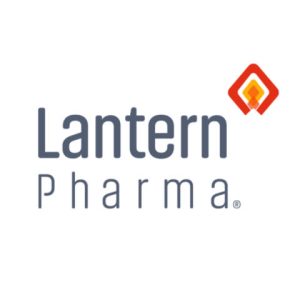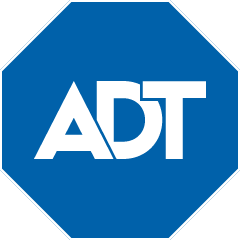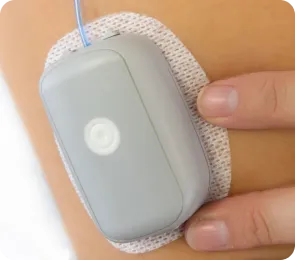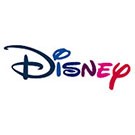Stock Market Mayhem (July 30) – $FFIV $INDP $JBLU $MODD $PYPL $SWK Rise!

Market Performance Overview
The S&P 500 dipped 0.5% and the Nasdaq composite sank 1.3%, while the Dow Jones Industrial Average bucked the trend with a 0.5% gain. This mixed performance was largely driven by a divergence between Big Tech stocks and smaller companies, with the Russell 2000 index of smaller stocks adding 0.3%, extending its market-leading gain for the month to 9.5%. The iShares Micro-Cap ETF closed at $127.24, +.01%. The day’s trading reflected a cautious approach from investors, who seemed to be employing a wait-and-watch strategy ahead of the Federal Reserve meeting and upcoming earnings reports from major tech companies.
Tech Stocks Tumble
The “Magnificent Seven” tech stocks, which had been driving the S&P 500 to record highs earlier in the year, faced a significant setback. Microsoft’s stock fell 0.9% during regular trading and continued to decline in after-hours trading following its quarterly report release that missed the mark. Other tech giants also struggled, with Nvidia tumbling 7%. This weakness in Big Tech overshadowed gains in other sectors, highlighting a potential shift in market dynamics. Investors’ focus has turned to upcoming earnings reports from Amazon, Apple, and Meta Platforms, with concerns that these tech behemoths might also fail to meet high expectations.
Microsoft, JetBlue, and AMD Reports
Microsoft’s Q4 earnings report dropped like a Windows update – unexpected and causing mild panic. The tech giant reported revenue of $64.7 billion, up 15% year-over-year, beating analyst expectations faster than Clippy offering unwanted advice. However, the Azure cloud growth of 29% left investors feeling like they’d just encountered the dreaded “blue screen of death”. Satya Nadella, Microsoft’s CEO, tried to reassure everyone by essentially saying, “Don’t worry, we’re still cool – we’ve got AI!” But the market responded with all the enthusiasm of someone being forced to use Bing instead of Google. Despite the mixed reception, Microsoft’s earnings per share hit $2.95, proving that even in the tech world, slow and steady (like Windows startup times) can still win the race. As the stock dipped in after-hours trading, one could almost hear the collective sigh of investors, reminiscent of the sound made when force-quitting a frozen Excel spreadsheet.
JetBlue Airways (JBLU) soared 12.3% after reporting an unexpected profit for the spring quarter, defying analysts’ predictions of a loss. The airline’s success was attributed to its improved on-time performance and customer attraction strategies.
After the closing bell, AMD joined the earnings parade, announcing revenue of $5.8 billion for the second quarter of 2024. These positive reports provided a counterpoint to the tech sector’s struggles, highlighting the diverse performance across different industries in the current market landscape.
Notable Stock Performances

In a plot twist worthy of a Silicon Valley sitcom, F5 Networks (FFIV) surged 13% faster than you can say “network optimization,” leaving investors wondering if they accidentally stumbled into a tech gold rush. The company’s stock rocketed to $200.66, up $23.07, as if it had discovered the secret sauce of the internet. Meanwhile, Stanley Black & Decker (SWK) hammered out a 10% gain, drilling its way to $106.05, up $9.62. Apparently, the market decided that power tools are the new cryptocurrency.[3] Not to be outdone, PayPal (PYPL) joined the party with an 8.6% jump to $64.00, up $5.06, proving that sometimes, digital wallets can indeed make it rain. This trio of overachievers left analysts scratching their heads and reaching for their calculators, wondering if they’d accidentally wandered into an alternate universe where stocks only go up. As one wag put it, “If these companies keep performing like this, we might need to rename Wall Street to ‘Woo-hoo Street’!”
Yield Curve Comedy Hour
As the yield curve continued its inverted dance, economists were left scratching their heads and wondering if they should dust off their recession prediction jokes. The 10-year note yield took a modest four-basis-point dip to 4.14%, while its shorter-term cousin, the 2-year note, followed suit with a three-basis-point decline to 4.36%. This persistent inversion had market watchers quipping that the yield curve was predicting “nine of the last five recessions,” a classic economist’s jest that highlights the indicator’s sometimes overzealous nature. Meanwhile, investors were left pondering whether to interpret this as a sign of impending economic doom or simply the bond market’s way of keeping everyone on their toes. As one wag put it, “The yield curve is like that friend who always thinks they know what’s coming next – sometimes they’re right, but they also predicted the apocalypse after that one bad haircut.”
Fed Reserve In View…
Economic Data Comedy Hour
In today’s episode of “Economic Data: The Comedy Show,” we witnessed a rollercoaster of numbers that left economists both scratching their heads and reaching for their calculators. The May FHFA Housing Price Index hit a perfect 0.0%, proving that sometimes, doing absolutely nothing is an achievement in itself. Meanwhile, the S&P Case-Shiller Home Price Index came in at 6.8%, matching expectations with the precision of a synchronized swimming team. Consumer Confidence surprised everyone by jumping to 100.3, suggesting that Americans are feeling as optimistic as someone who just found a $20 bill in their old jeans. The JOLTS report revealed 8.184 million job openings, slightly down from the previous month, indicating that the job market is playing hard to get. In a plot twist worthy of a soap opera, nearly all prior figures were revised, leaving economists to wonder if they’re living in a parallel universe where numbers have a life of their own.
VP Watchlist Updates

Eupraxia Pharmaceuticals (EPRX, $2.75,-1.79% today), is a clinical-stage biotechnology company focused on the development of locally delivered, extended-release products that have the potential to address therapeutic areas with high unmet medical need. The Company strives to provide improved patient benefit and has developed technology designed to deliver targeted, long-lasting activity with fewer side effects. DiffuSphere™, a proprietary, polymer-based micro-sphere technology, is designed to facilitate targeted drug delivery, with extended duration of effect, and offers multiple, highly tuneable pharmacokinetic (PK) profiles. This investigational technology can be engineered for use with multiple active pharmaceutical ingredients and delivery methods.Note that Eupraxia recently completed a Phase 2b clinical trial (SPRINGBOARD) of EP-104IAR for the treatment of pain due to osteoarthritis of the knee. The trial met its primary endpoint and three of the four secondary endpoints. Eupraxia has expanded the EP-104 platform into gastrointestinal disease with the Phase 1b/2a RESOLVE trial for treating EoE. Eupraxia is also developing a pipeline of later- and earlier-stage long-acting formulations. Potential pipeline indications include candidates for other inflammatory joint indications and oncology, each designed to improve on the activity and tolerability of currently approved drugs.On June 5, Eupraxia announced that results from its Phase 2 study of EP-104IAR for the treatment of osteoarthritis of the knee will be presented at the upcoming European Alliance of Associations for Rheumatology (“EULAR”) European Congress of Rheumatology 2024 (the “Meeting”). The EULAR Meeting is being held in Vienna, Austria from June 12-15, 2024.On May 23, Eupraxia announced that regulators in Australia and Canada have cleared the Company’s request to expand its Phase 1b/2a RESOLVE trial, which is evaluating the safety and efficacy of EP-104GI as a treatment for eosinophilic esophagitis (“EoE”). For further details about Eupraxia, please visit the Company’s website at: www.eupraxiapharma.com.
 Shares of Lantern (LTRN), an artificial intelligence (“AI”) company developing targeted and transformative cancer therapies using its proprietary RADR® AI and machine learning (“ML”) platform with multiple clinical stage drug program, closed at $4.45, -3.47%. On July 10, Lantern announced a significant advancement towards the development of a diagnostic for its drug candidate LP-184. The diagnostic is currently based on qRT-PCR (quantitative real-time polymerase chain reaction) technology and is focused on quantifying the amount of PTGR1 RNA in patient tumor samples to assess the potential for sensitivity to Lantern’s drug candidate LP-184. The company plans to further develop and validate the assay for its use as a potential tool for patient selection in later stage clinical trials across a broad range of solid tumors that have shown sensitivity to LP-184. Panna Sharma, CEO of Lantern Pharma stated, “This milestone represents a significant leap forward in our precision oncology approach and in ensuring that we enrich our future LP-184 clinical trials with the patients we believe will be most likely to benefit. By working to develop a companion diagnostic for LP-184, we’re not just advancing a drug candidate; we’re paving the way for more personalized and effective cancer treatments for patients that have the highest likelihood of benefitting from the therapy. The planned use of biomarkers like PTGR1 in our clinical trials exemplifies our commitment to data-driven, patient-centric drug development.”Panna Sharma, CEO of Lantern, was interviewed recently on the ‘Today In Nashville’, a program hosted by Carole Sullivan and associated with Nashville’s WSMV 4, an NBC affiliate. Watch it here to learn more.On June 12, Lantern announced that the Japan Patent Office (JPO) has issued a Certificate of Patent for patent application no. 2021-513267 / registration no. 7489966 directed to Lantern Pharma’s drug candidate LP-284 ((+)N-hydroxy-N-(methylacylfulvene)urea). The Certificate of Patent entitled “Illudin Analogs, Uses Thereof, and Methods for Synthesizing the Same” covers molecule LP-284, including claims covering the new molecular entity. A Certificate of Patent is issued after JPO examinations have confirmed the merits of a patent request. Lantern values the broad protection this latest patent provides. Lantern estimates that LP-284 can have the potential to improve outcomes for 40,000 to 80,000 patients with blood cancers annually, with a global annual market potential of $4 Billion USD.
Shares of Lantern (LTRN), an artificial intelligence (“AI”) company developing targeted and transformative cancer therapies using its proprietary RADR® AI and machine learning (“ML”) platform with multiple clinical stage drug program, closed at $4.45, -3.47%. On July 10, Lantern announced a significant advancement towards the development of a diagnostic for its drug candidate LP-184. The diagnostic is currently based on qRT-PCR (quantitative real-time polymerase chain reaction) technology and is focused on quantifying the amount of PTGR1 RNA in patient tumor samples to assess the potential for sensitivity to Lantern’s drug candidate LP-184. The company plans to further develop and validate the assay for its use as a potential tool for patient selection in later stage clinical trials across a broad range of solid tumors that have shown sensitivity to LP-184. Panna Sharma, CEO of Lantern Pharma stated, “This milestone represents a significant leap forward in our precision oncology approach and in ensuring that we enrich our future LP-184 clinical trials with the patients we believe will be most likely to benefit. By working to develop a companion diagnostic for LP-184, we’re not just advancing a drug candidate; we’re paving the way for more personalized and effective cancer treatments for patients that have the highest likelihood of benefitting from the therapy. The planned use of biomarkers like PTGR1 in our clinical trials exemplifies our commitment to data-driven, patient-centric drug development.”Panna Sharma, CEO of Lantern, was interviewed recently on the ‘Today In Nashville’, a program hosted by Carole Sullivan and associated with Nashville’s WSMV 4, an NBC affiliate. Watch it here to learn more.On June 12, Lantern announced that the Japan Patent Office (JPO) has issued a Certificate of Patent for patent application no. 2021-513267 / registration no. 7489966 directed to Lantern Pharma’s drug candidate LP-284 ((+)N-hydroxy-N-(methylacylfulvene)urea). The Certificate of Patent entitled “Illudin Analogs, Uses Thereof, and Methods for Synthesizing the Same” covers molecule LP-284, including claims covering the new molecular entity. A Certificate of Patent is issued after JPO examinations have confirmed the merits of a patent request. Lantern values the broad protection this latest patent provides. Lantern estimates that LP-284 can have the potential to improve outcomes for 40,000 to 80,000 patients with blood cancers annually, with a global annual market potential of $4 Billion USD.
 Shares of Indaptus Therapeutics, Inc. (Nasdaq: INDP) closed at $2.09, +1.95% and moved up +4.78% at $2.19 in the aftermarket. Indaptus is a company with the ability to harness both the body’s innate and adaptive immune responses, believes that they are uniquely positioned to revolutionize the treatment of cancer and certain infectious diseases. Indaptus Therapeutics has evolved from more than a century of immunotherapy advances. The Company’s novel approach is based on the hypothesis that efficient activation of both innate and adaptive immune cells and pathways and associated anti-tumor and anti-viral immune responses will require a multi-targeted package of immune system-activating signals that can be administered safely intravenously (i.v.). Indaptus’ patented technology is composed of single strains of attenuated and killed, non-pathogenic, Gram-negative bacteria producing a multiple Toll-like receptor (TLR), Nucleotide oligomerization domain (Nod)-like receptor (NLR) and Stimulator of interferon genes (STING) agonist Decoy platform. The products are designed to have reduced i.v. toxicity, but largely uncompromised ability to prime or activate many of the cells and pathways of innate and adaptive immunity. Decoy products represent an antigen-agnostic technology that have produced single-agent activity against metastatic pancreatic and orthotopic colorectal carcinomas, single agent eradication of established antigen-expressing breast carcinoma, as well as combination-mediated eradication of established hepatocellular carcinomas and non-Hodgkin’s lymphomas in standard pre-clinical models, including syngeneic mouse tumors and human tumor xenografts.On June 4, Indaptus announced that its Chief Medical Officer, Roger Waltzman, M.D., will present an update on the Company’s lead product candidate, Decoy20, at the 7th Annual Next-Gen Immuno-Oncology Conference in Boston on June 20-21, 2024. Dr. Waltzman will present preliminary results from the Company’s ongoing Phase 1 study of Decoy20, an intravenous treatment using killed bacteria designed to broadly stimulate the immune system, in patients with advanced solid tumors.On June 3, Indaptus announced updated data from its ongoing Phase 1 clinical trial of Decoy20 in patients with solid tumors. The data were featured in a poster presentation at the American Society of Clinical Oncology (ASCO) Annual Meeting on June 1 in Chicago, Illinois.
Shares of Indaptus Therapeutics, Inc. (Nasdaq: INDP) closed at $2.09, +1.95% and moved up +4.78% at $2.19 in the aftermarket. Indaptus is a company with the ability to harness both the body’s innate and adaptive immune responses, believes that they are uniquely positioned to revolutionize the treatment of cancer and certain infectious diseases. Indaptus Therapeutics has evolved from more than a century of immunotherapy advances. The Company’s novel approach is based on the hypothesis that efficient activation of both innate and adaptive immune cells and pathways and associated anti-tumor and anti-viral immune responses will require a multi-targeted package of immune system-activating signals that can be administered safely intravenously (i.v.). Indaptus’ patented technology is composed of single strains of attenuated and killed, non-pathogenic, Gram-negative bacteria producing a multiple Toll-like receptor (TLR), Nucleotide oligomerization domain (Nod)-like receptor (NLR) and Stimulator of interferon genes (STING) agonist Decoy platform. The products are designed to have reduced i.v. toxicity, but largely uncompromised ability to prime or activate many of the cells and pathways of innate and adaptive immunity. Decoy products represent an antigen-agnostic technology that have produced single-agent activity against metastatic pancreatic and orthotopic colorectal carcinomas, single agent eradication of established antigen-expressing breast carcinoma, as well as combination-mediated eradication of established hepatocellular carcinomas and non-Hodgkin’s lymphomas in standard pre-clinical models, including syngeneic mouse tumors and human tumor xenografts.On June 4, Indaptus announced that its Chief Medical Officer, Roger Waltzman, M.D., will present an update on the Company’s lead product candidate, Decoy20, at the 7th Annual Next-Gen Immuno-Oncology Conference in Boston on June 20-21, 2024. Dr. Waltzman will present preliminary results from the Company’s ongoing Phase 1 study of Decoy20, an intravenous treatment using killed bacteria designed to broadly stimulate the immune system, in patients with advanced solid tumors.On June 3, Indaptus announced updated data from its ongoing Phase 1 clinical trial of Decoy20 in patients with solid tumors. The data were featured in a poster presentation at the American Society of Clinical Oncology (ASCO) Annual Meeting on June 1 in Chicago, Illinois.

Shares of ADT Inc. (ADT), a leading provider of monitored security and automation solutions for residential and small business customers in the United States and Canada, closed at $7.73, -.13% after establishing a new 52-wk high of $7.92 during intraday trading recently. ADT is due to report quarterly results on Thursday, Aug. 1. On June 17, ADT announced the appointment of Dan Houston and Danielle Tiedt to the Company’s Board of Directors as additional independent directors. In conjunction with their appointments, Houston and Tiedt will both join the Board’s Nominating and Corporate Governance Committee, while Houston will also join the Board’s Compensation Committee. Houston is chairman, president and chief executive officer of Principal Financial Group, a global financial services company with $709 billion of assets under management. He joined Principal in 1984 and has served as chief executive officer since 2015. Houston serves on several boards of non-profit organizations, including the American Council of Life Insurers, Iowa State University Business School Dean’s Advisory Council and Partnership for a Healthier America. As chief marketing officer for Google’s YouTube, Tiedt oversees global marketing strategy, product marketing and brand vision. During her tenure, YouTube has grown to a $40 billion business operating in 76 countries. Prior to joining Google in 2012, Tiedt held various leadership roles in technology product management and marketing at Microsoft. She serves on the board of the 4-H Foundation, America’s largest youth development organization.

Modular Medical, Inc. (NASDAQ: MODD, $1.66, +9.21% on 2x the average daily volume), is a development-stage, insulin delivery technology company seeking to launch the next generation of user-friendly and affordable insulin pump technology. Using its patented technologies, the company seeks to eliminate the tradeoff between complexity and efficacy, thereby making top quality insulin delivery both affordable and simple to learn. Their mission is to improve access to the highest standard of glycemic control for people with diabetes taking it beyond “superusers” and providing “diabetes care for the rest of us.” Modular Medical was founded by Paul DiPerna, a seasoned medical device professional and microfluidics engineer. Prior to founding Modular Medical, Mr. DiPerna was the founder (in 2005) of Tandem Diabetes and invented and designed its t:slim insulin pump. More information is available at https://modular-medical.com.

Quote of the Day
Economic Reports
On Tuesday, the May FHFA Housing Price Index hit a perfect 0.0%, proving that sometimes, doing absolutely nothing is an achievement in itself. Meanwhile, the S&P Case-Shiller Home Price Index came in at 6.8%, matching expectations with the precision of a synchronized swimming team. Consumer Confidence surprised everyone by jumping to 100.3, suggesting that Americans are feeling as optimistic as someone who just found a $20 bill in their old jeans. The JOLTS report revealed 8.184 million job openings, slightly down from the previous month, indicating that the job market is playing hard to get.
Videos
Post View Count : 501














